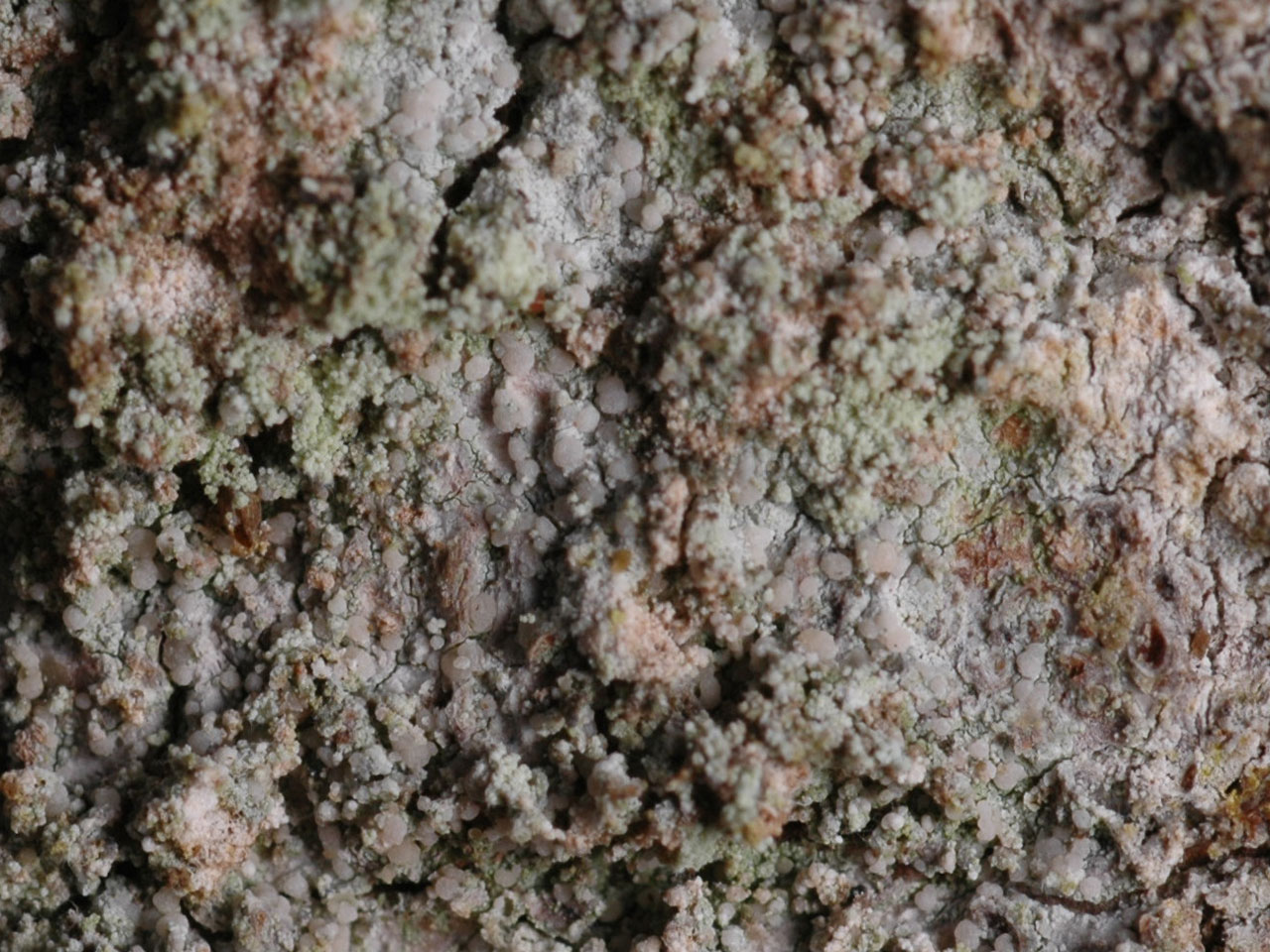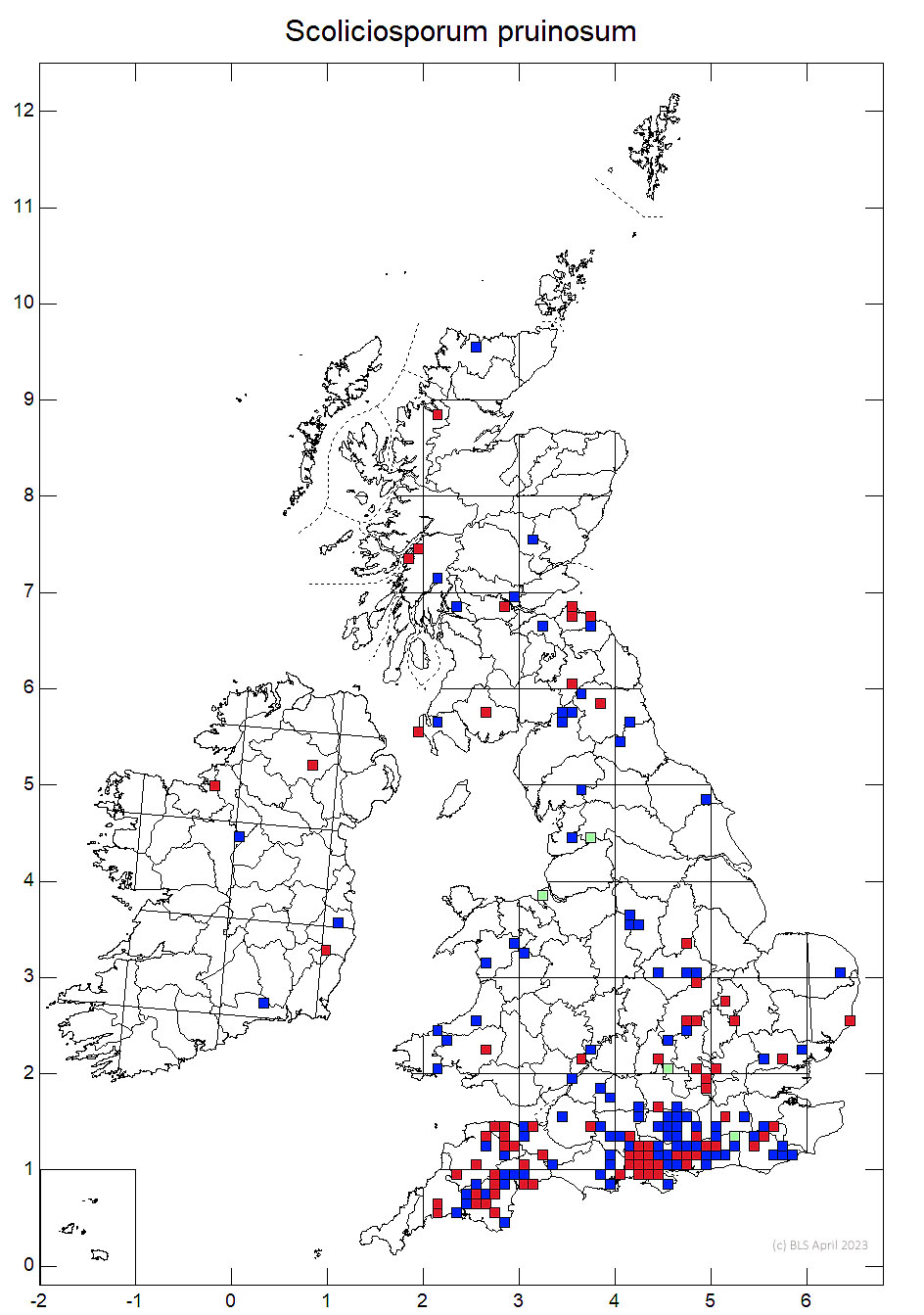A scruffy little lichen that can be difficult to spot, but once seen it is distinctive in the abundance of attractive white pruinose apothecia that fluoresce bright white. On acid bark in sheltered situations, especially Oak, but not restricted to old woodlands, commonest in the south of England but with scattered records extending to Scotland. Rarely recorded in Ireland.
Thallus thin, sub-leprose-granular or almost absent, glaucous to grey-white, often wide-spreading, effuse; photobiont 7–14 µm diam. Apothecia abundant, often crowded, 0.1–0.3 mm diam., convex from initiation, becoming almost globose; true exciple obscured, sometimes becoming irregularly tuberculate; disc very pale pinkish, yellow- or brown-white, becoming browner when mature, ± white-pruinose; epithecium colourless or pale brown-yellow, with numerous colourless interspersed granules to 1 µm diam., dissolving in K; paraphyses 1–1.5 µm diam., not swollen at the apices. Asci Biatora-type. Ascospores (22–) 25–32 (–40) × 1–1.2 µm, helically twisted in the ascus, sigmoid-curved or more rarely straight on release; septa 3–5, very indistinct. Pycnidia not seen. Apothecia fleetingly KC+ violet, UV+ white (lobaric acid in apothecia, as pruina), sometimes the thallus is also UV+ white.
Characterised by the tiny white-pruinose white to pale pink ± crowded apothecia, the densely granular epithecium and true exciple, and the helical twisting of the spores in the asci. Superficially recalls Mycobilimbia sphaeroides (Ramalinaceae) which has larger non-pruinose and more deeply coloured apothecia and broader, 1-to 3-septate ascospores. Micarea species, e.g. M. pycnidiophora or M. stipitata, have similar but non-pruinose and UV– apothecia and are usually accompanied by numerous white or ivory-white stalked pycnidia; M. alabastrites is similar but has a non-granular epithecium and differently shaped spore and is C+ red.
On acid bark in sheltered situations, especially Oak; possibly widespread but overlooked, or spreading with the decline in acidifying pollution.

Mainly S. & S.W. Britain, extending locally to S. Scotland with occasional outliers further north; scattered in Ireland.
Cannon, P., Coppins, B., Aptroot, A., Fryday, A., Sanderson, N., Simkin, J. & Yahr, R. (2024). Miscellaneous Lecanorales including Biatorella (Biatorellaceae), Carbonicola (Carbonicolaceae), Haematomma (Haematommataceae), Psilolechia (Psilolechiaceae), Ramboldia (Ramboldiaceae), Scoliciosporum (Scoliciosporaceae), and Adelolecia, Catinaria, Frutidella, Herteliana, Lithocalla, Myochroidea, Puttea and Schadonia (of uncertain position). Revisions of British and Irish Lichens 42: 1–23.

